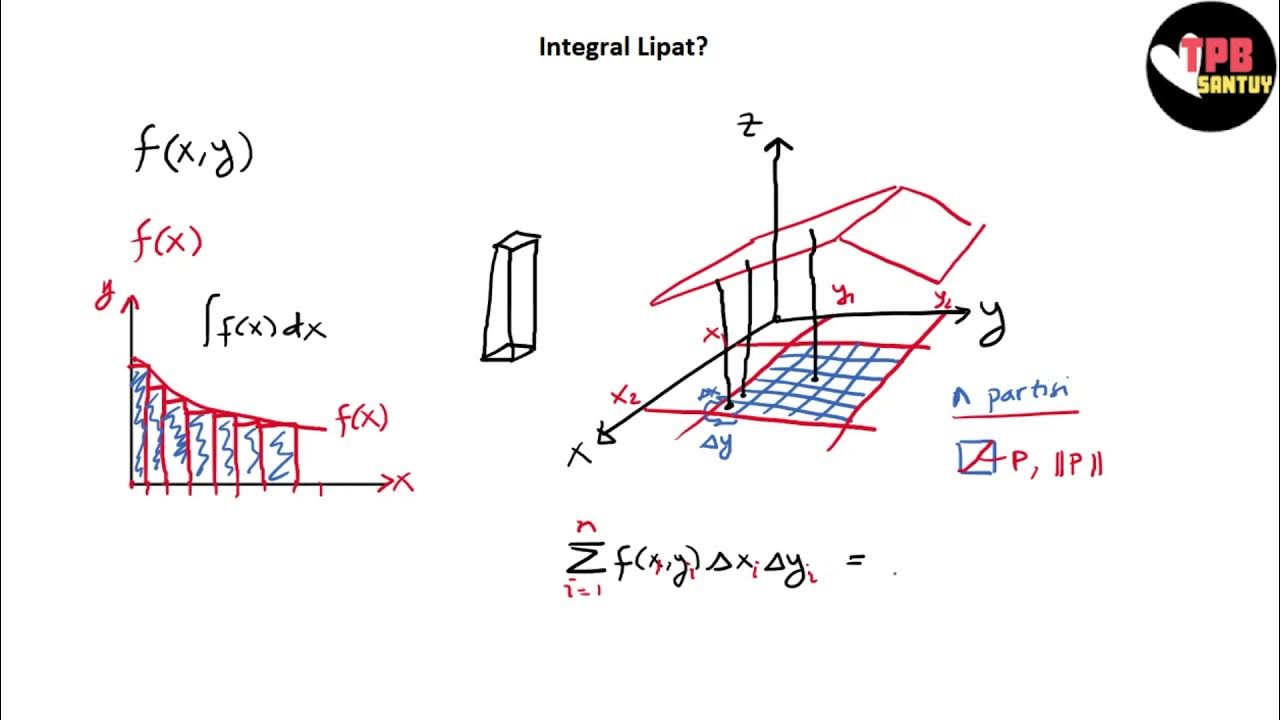Teorema Cauchy
Summary
TLDRIn this lecture on complex analysis, the discussion revolves around integral calculus applied to room design, using real variables and analytical functions. The lecturer introduces concepts like double integrals over an area, simple closed curves, and analytic functions. The focus is on deriving properties from integrals, with an emphasis on analytic functions inside and outside a curve. Examples include integrals over complex functions such as z^n, demonstrating how they lead to solutions for specific environments. The lecture explores theoretical and practical applications of these concepts in a detailed, methodical approach.
Takeaways
- 😀 Complex analysis concepts are discussed with a focus on integral equations and environment design.
- 😀 The function FZ is expressed as a combination of user input and TV set, which is integral to the lecture.
- 😀 Real variables are introduced with a focus on the design of room environments and their representation in equations.
- 😀 The script emphasizes the importance of closed curves, such as simple curves, in complex analysis problems.
- 😀 The lecture covers the integral of a function over a defined area, demonstrating the use of double integrals.
- 😀 A focus is placed on understanding and solving integral equations related to complex environments.
- 😀 The concept of an analytic function is explained, with emphasis on its role both inside and outside specific curves.
- 😀 The analogy to thermal properties and their relation to complex analysis is briefly touched on, with examples.
- 😀 Integral equations involving the function Z^n are used to illustrate important principles in complex analysis.
- 😀 There is a specific example involving the integral of 1/z dz, with reference to complex functions and singularities.
- 😀 A discussion about the nature of curves, analytical functions, and their behavior when placed on specific regions of the complex plane.
Q & A
What is the primary focus of the lecture in the transcript?
-The lecture primarily discusses concepts in complex analysis, including integrals, analytic functions, and their relationship to curves and areas in a mathematical context.
What does the term 'analytic function' refer to in the context of this lecture?
-An analytic function, in the context of the lecture, refers to a function that is differentiable in a given region, both inside and outside a curve, and whose integral properties can be studied using complex analysis.
What does the lecturer mean by the 'room environment' in the discussion?
-The 'room environment' is likely a metaphorical reference to a region in the complex plane where the function is being analyzed, possibly representing the space within a closed curve.
What is the significance of the integral of the function 'F(Z)' mentioned in the lecture?
-The integral of the function 'F(Z)' is important because it is used to study the behavior of complex functions along paths or curves, particularly for understanding how these functions behave within certain regions.
What does the lecturer mean by 'simple closed curve'?
-A 'simple closed curve' refers to a path in the complex plane that is continuous, does not intersect itself, and forms a closed loop, typically used in complex analysis for evaluating integrals.
How is the double integral used in the context of this lecture?
-The double integral is used to calculate the integral of a function over a two-dimensional region (area) in the complex plane, which is essential for evaluating certain types of integrals in complex analysis.
What is the role of the equation 'Dout X = do redo' in the lecture?
-This equation seems to be a symbolic representation or shorthand in the lecture, possibly indicating a relationship between variables or integrals, though it is not fully clear from the transcript.
What does the lecturer mean by the term 'analytic and gamma'?
-The term 'analytic and gamma' seems to refer to an analytic function (possibly denoted by gamma) that is defined and behaves according to the principles of complex analysis. The exact meaning is unclear but suggests a specific function under study.
Why does the lecturer mention the unit circle in relation to complex functions?
-The unit circle is often used in complex analysis as a standard path (or curve) for evaluating integrals, particularly for testing the behavior of functions like 1/z, which have special properties around the unit circle.
What does the lecturer mean by 'the function is analytic, all inside this curve and also outside'?
-This refers to a situation where the function is analytic (i.e., differentiable) in the entire region inside and outside the curve. The function behaves well everywhere in this region, which is an important property for performing integrals in complex analysis.
Outlines

Этот раздел доступен только подписчикам платных тарифов. Пожалуйста, перейдите на платный тариф для доступа.
Перейти на платный тарифMindmap

Этот раздел доступен только подписчикам платных тарифов. Пожалуйста, перейдите на платный тариф для доступа.
Перейти на платный тарифKeywords

Этот раздел доступен только подписчикам платных тарифов. Пожалуйста, перейдите на платный тариф для доступа.
Перейти на платный тарифHighlights

Этот раздел доступен только подписчикам платных тарифов. Пожалуйста, перейдите на платный тариф для доступа.
Перейти на платный тарифTranscripts

Этот раздел доступен только подписчикам платных тарифов. Пожалуйста, перейдите на платный тариф для доступа.
Перейти на платный тариф5.0 / 5 (0 votes)






